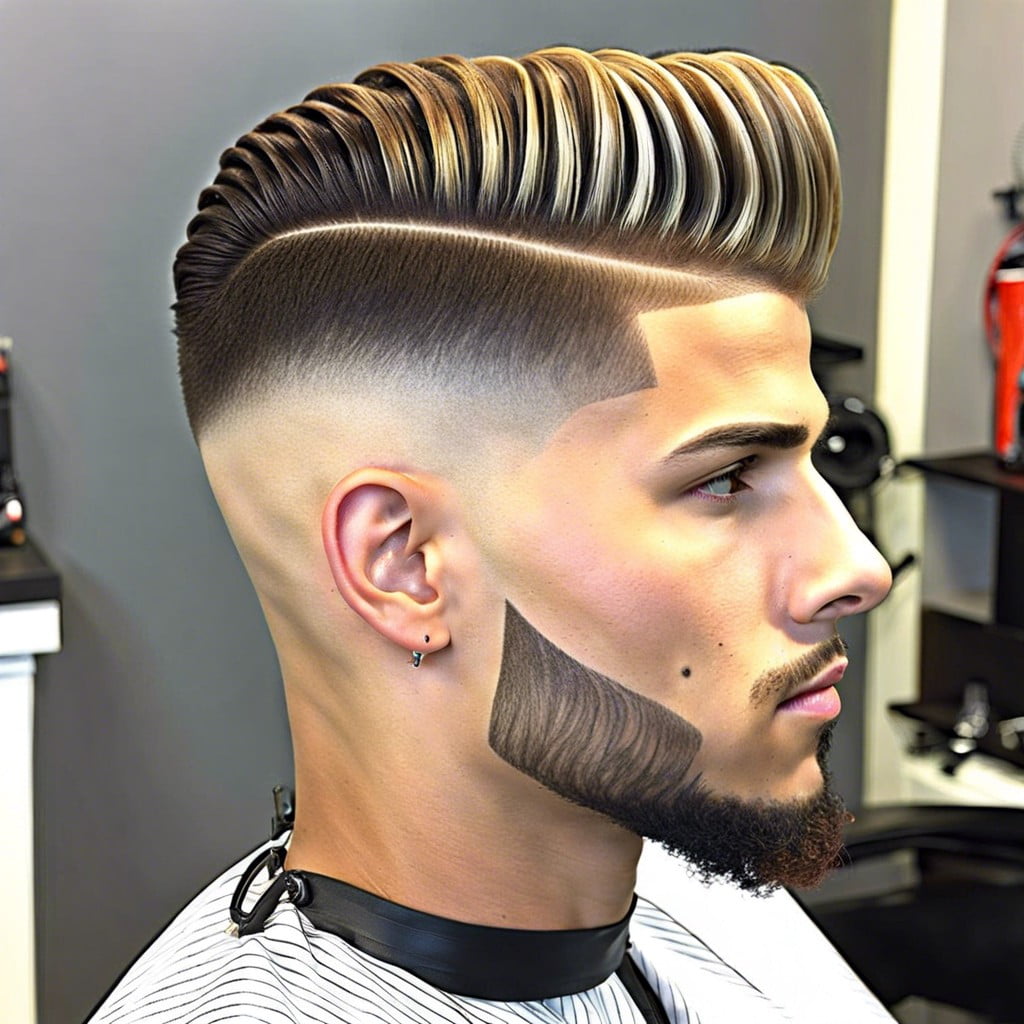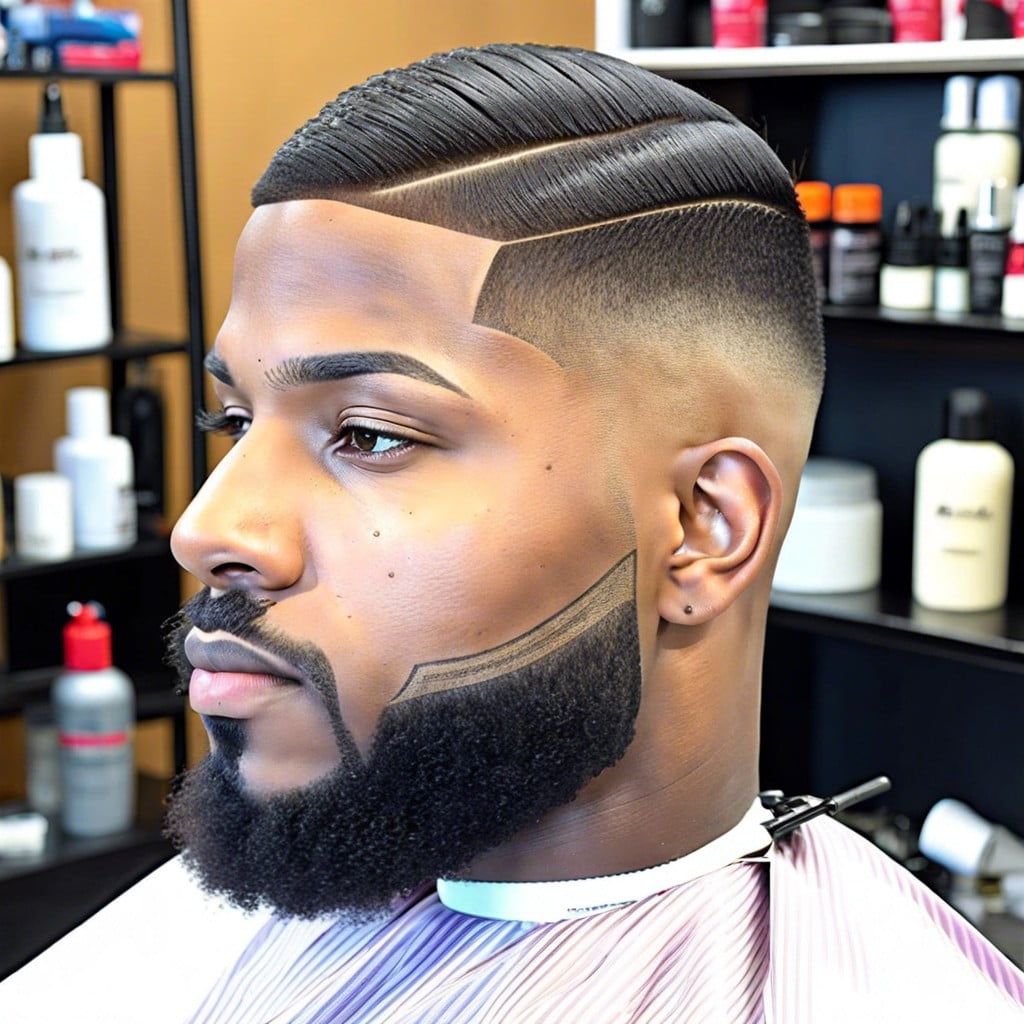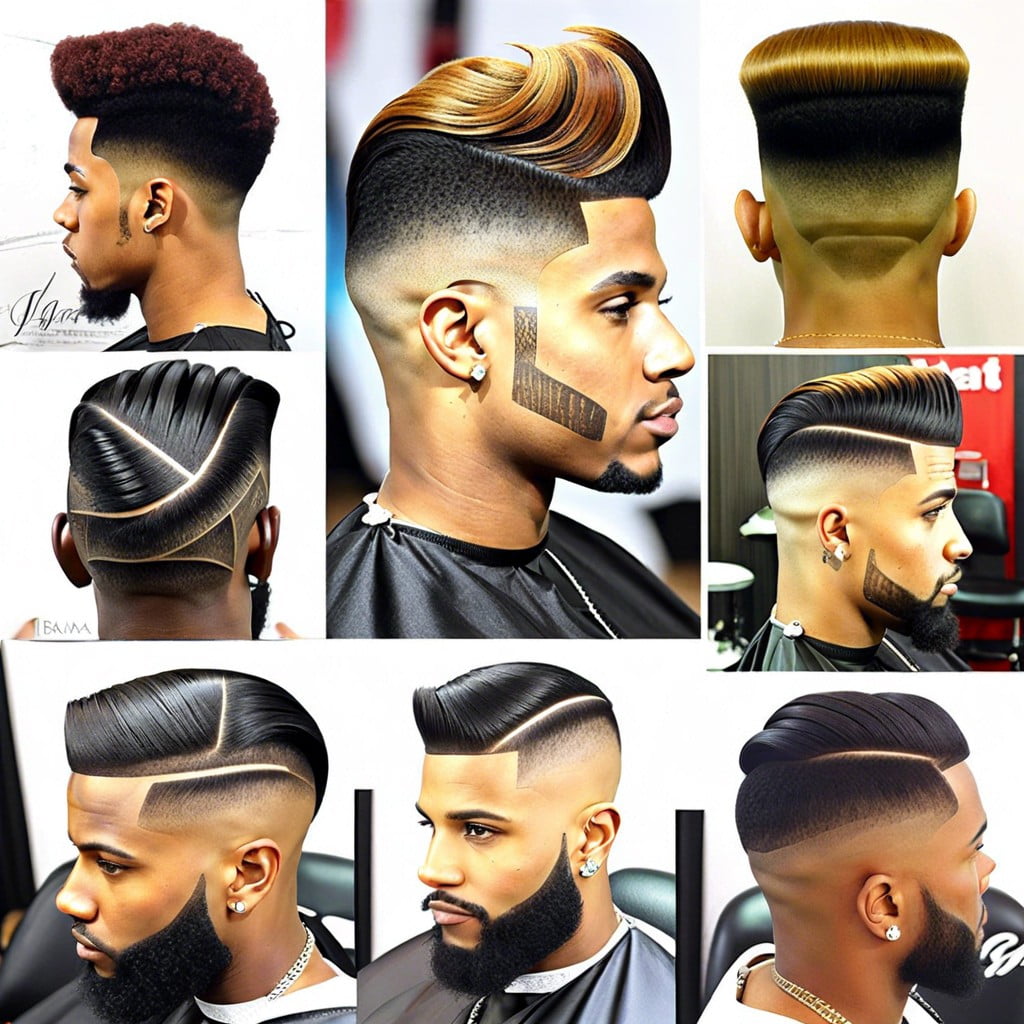Mastering The Low Taper Fade: Your Ultimate Style Guide
In the dynamic world of men's grooming, few hairstyles have captured the zeitgeist quite like the low taper fade, often referred to as the "taper fade bajo." This modern, versatile, and undeniably sharp haircut has become a cornerstone of contemporary male fashion, offering a clean yet stylish aesthetic that transcends age and profession. It's a look that speaks volumes about attention to detail and a keen sense of personal style, making it a go-to choice for anyone looking to elevate their appearance.
Whether you're a seasoned fade enthusiast or considering this sophisticated cut for the first time, understanding its nuances is key to achieving and maintaining the perfect look. From its distinct characteristics to the art of styling and maintenance, this comprehensive guide will walk you through everything you need to know about embracing the taper fade bajo, ensuring you step out with confidence and flair.
Table of Contents
- What Exactly is a Taper Fade Bajo?
- The Anatomy of a Perfect Low Taper Fade
- Why the Low Taper Fade is a Cut Above
- Finding Your Ideal Low Taper Fade
- Styling and Maintaining Your Taper Fade Bajo
- Beyond the Basics: Popular Low Taper Fade Variations
- Choosing the Right Barber for Your Taper Fade Bajo
- The Cultural Impact and Evolution of the Fade
- Common Pitfalls to Avoid with Your Low Taper Fade
What Exactly is a Taper Fade Bajo?
The "taper fade bajo," or low taper fade, is a haircut characterized by a gradual reduction in hair length, starting very low on the sides and back of the head, typically just above the ear and neckline. Unlike a high or mid fade, where the transition begins higher up the head, the low taper fade maintains more length on the sides, offering a subtler and often more classic aesthetic. The "bajo" (Spanish for "low") precisely describes this starting point. The hair seamlessly transitions from a very short length (often skin-level) at the bottom to a longer length as it moves upwards, blending smoothly into the hair on top. This creates a clean, polished look without exposing too much scalp, making it a versatile choice for various hair textures and personal styles. It's a sophisticated take on the traditional fade, providing a refined edge that's both modern and timeless.The Anatomy of a Perfect Low Taper Fade
Achieving a perfect low taper fade requires precision and an understanding of its key components. At its core, the low taper fade is defined by its gradual length progression. The shortest point, often bald or very close to the skin, is confined to the very bottom of the hairline around the ears and nape of the neck. From there, the hair gradually increases in length as it ascends, creating a soft, seamless gradient. A skilled barber will use clippers with various guards, and often a straight razor for the crispest lines, to execute this transition. The blend should be smooth, with no harsh lines or visible steps. The area above the fade, leading into the top of the head, typically retains more length, allowing for diverse styling options. The precision of the fade, particularly the clean line-up around the temples and neck, is crucial for defining the sharpness of the taper fade bajo. This meticulous attention to detail is what elevates a good low taper fade to a truly exceptional one.Why the Low Taper Fade is a Cut Above
The enduring popularity of the low taper fade isn't just a fleeting trend; it's a testament to its inherent versatility and aesthetic appeal. One of its primary advantages is its adaptability. It can be paired with almost any length and style on top, from a classic pompadour or slick back to a textured crop, messy quiff, or even longer, flowing hair. This flexibility allows individuals to personalize their look while maintaining a clean, sharp foundation. Furthermore, the taper fade bajo offers a professional yet stylish appearance. It's neat enough for corporate environments but edgy enough for casual settings, making it a truly universal cut. It provides a clean canvas that highlights the features of the face and neck, contributing to a well-groomed and confident demeanor. Unlike higher fades that can sometimes appear too aggressive or trendy for certain settings, the low taper fade strikes a perfect balance, offering a subtle sophistication that appeals to a broad demographic. Its ability to complement various hair textures, from straight to curly and coily, further solidifies its status as a top-tier haircut.Finding Your Ideal Low Taper Fade
While the low taper fade is incredibly versatile, optimizing it for your unique features and hair type can elevate your look from good to exceptional.Matching the Fade to Your Face Shape
The beauty of the low taper fade lies in its ability to complement various face shapes.- **Round Faces:** The low taper fade can help to elongate the face by creating sharper angles along the jawline and temples, providing a more defined structure. Pairing it with some height on top can further enhance this effect.
- **Square Faces:** This cut works exceptionally well for square faces, softening the strong jawline while maintaining a masculine aesthetic. The subtle fade accentuates the natural angles without making them appear too harsh.
- **Oval Faces:** Considered the most versatile face shape, oval faces can pull off almost any variation of the low taper fade with ease. Experiment with different lengths on top to find your preferred balance.
- **Long/Oblong Faces:** To avoid further elongating the face, it's advisable to keep the hair on top from being too high. A low taper fade helps maintain width on the sides, balancing the facial proportions.
- **Heart-Shaped Faces:** The low fade can help to balance a wider forehead with a narrower chin. Consider styles on top that add volume to the sides to create more symmetry.
Hair Type and Texture Considerations
The low taper fade is remarkably adaptable to different hair types, but each requires specific considerations:- **Straight Hair:** Straight hair showcases the fade's precision beautifully, making clean lines and sharp transitions very evident. Product choice is crucial to add texture and prevent a flat look on top.
- **Wavy Hair:** Wavy hair adds natural movement and volume to the top, creating a softer contrast with the faded sides. The fade helps to control the often unruly nature of wavy hair on the sides and back.
- **Curly Hair:** For curly and coily hair, the low taper fade provides an excellent framework. The tight fade on the sides and back creates a clean, defined look that contrasts strikingly with the natural volume and texture on top. This is particularly popular for styles like afro fades or textured crops, where the curls are celebrated.
- **Thick Hair:** Thick hair can sometimes appear bulky on the sides. A low taper fade effectively reduces this bulk, providing a sleek and manageable finish while maintaining density on top.
- **Thinning Hair:** For those with thinning hair, a low taper fade can be a strategic choice. By keeping the sides very short, it can make the hair on top appear fuller by comparison. A skilled barber can blend it seamlessly to minimize the appearance of thinning areas.
Styling and Maintaining Your Taper Fade Bajo
A great haircut is only half the battle; proper styling and consistent maintenance are crucial to keeping your taper fade bajo looking its best.Essential Products for a Pristine Look
The right products can make all the difference in how your low taper fade holds up throughout the day.- **Pomade:** Ideal for slick-back, side-part, or pompadour styles. Choose water-based for easy wash-out and a medium to high hold with shine, or oil-based for stronger hold and higher shine.
- **Matte Paste/Clay:** Perfect for textured, natural-looking styles. These products offer strong hold with a matte finish, adding volume and definition without shine.
- **Sea Salt Spray:** A fantastic pre-styling product for adding texture and volume, especially for wavy or fine hair. It provides a natural, beachy feel.
- **Hair Spray:** For extra hold and to lock your style in place, a light to medium hold hairspray can be applied as a finishing touch.
- **Moisturizer/Oil (for curly/coily hair):** If you have textured hair, a good leave-in conditioner or natural oil (like argan or jojoba) will keep your curls hydrated and defined, preventing frizz.
- **Edge Control:** For those with textured hair, edge control can be used to lay down and define the hairline around the fade, ensuring a super crisp finish.
Daily Styling Tips and Tricks
1. **Start with Clean, Damp Hair:** Most styling products work best when applied to hair that is towel-dried but still slightly damp. 2. **Even Distribution:** Apply a small amount of product to your palms and rub them together before distributing evenly through your hair, focusing on the roots for volume and tips for definition. 3. **Blow Drying (Optional but Recommended):** For added volume and control, especially with pompadours or quiffs, blow-dry your hair into the desired shape using a brush. This sets the foundation before applying final styling products. 4. **Finger Styling vs. Comb:** Use your fingers for a more natural, textured look. A comb or brush is ideal for slicker, more defined styles. 5. **Focus on the Top:** Since the sides are faded, most of your styling effort will be concentrated on the longer hair on top. Experiment with different directions and volumes.Maintaining the Freshness: How Often to Visit Your Barber
The crispness of a low taper fade is its hallmark, but fades grow out quickly. To maintain that sharp, clean look, regular visits to your barber are essential. * **Every 2-3 Weeks:** This is the ideal frequency for most individuals to keep the fade looking fresh and the lines sharp. * **Every 3-4 Weeks:** If you prefer a slightly softer grow-out or have slower-growing hair, you might be able to stretch it to four weeks, but the distinct low taper fade will likely start to lose its definition. * **Line-Up/Edge-Up:** Some barbers offer quick "line-up" services in between full cuts, which only involve cleaning up the edges around the temples and neck. This can extend the life of your fade by a few extra days.Beyond the Basics: Popular Low Taper Fade Variations
The low taper fade serves as a fantastic base for numerous stylistic interpretations, allowing for endless personalization.- **Low Taper Fade with Textured Crop:** A popular modern choice, this combines the clean fade with a shorter, textured top that's often styled forward. It's low maintenance and very stylish.
- **Low Taper Fade with Quiff:** For those who prefer more volume and a classic feel, pairing the fade with a quiff on top creates a sophisticated yet edgy look. The quiff can be styled messy or refined.
- **Low Taper Fade with Slick Back/Side Part:** This combination offers a timeless, polished appearance. The fade keeps the sides neat, while the top is slicked back or to the side for a professional finish.
- **Low Taper Fade with Pompadour:** A more dramatic and voluminous option, the pompadour adds significant height and style to the top, beautifully contrasted by the sharp low fade.
- **Low Taper Fade with Curls/Afro:** For individuals with naturally curly or coily hair, the low taper fade creates a sharp contrast with the voluminous texture on top, leading to iconic styles like the afro fade or defined curly top.
- **Low Taper Fade with Hard Part:** A hard part (a shaved line) can be incorporated into the fade or the top section to add an extra element of sharpness and definition, creating a bold statement.
- **Low Taper Fade with Design:** More adventurous individuals might opt for a hair design or pattern shaved into the faded area, adding a unique artistic touch.
Choosing the Right Barber for Your Taper Fade Bajo
The success of your low taper fade hinges almost entirely on the skill of your barber. A truly great fade is an art form, requiring precision, an eye for detail, and a steady hand. * **Look for Specialization:** Seek out barbers who explicitly showcase their fade work on social media or in their shop. Many barbers specialize in modern cuts and fades. * **Check Portfolios:** Most barbers have online portfolios (Instagram is a common platform). Look for consistent, clean fades and sharp line-ups. Pay attention to how well they blend the different lengths. * **Read Reviews:** Online reviews can provide insights into a barber's skill, professionalism, and customer service. Look for comments specifically mentioning fades or intricate cuts. * **Consultation is Key:** Before the first cut, have a thorough consultation. A good barber will ask about your desired length, lifestyle, and hair type, and offer advice on what will work best for you. They should be able to explain how they plan to execute the taper fade bajo. * **Communication:** Don't be afraid to communicate exactly what you want. Bring reference photos if possible. Even a slight misunderstanding can lead to a less-than-ideal fade.The Cultural Impact and Evolution of the Fade
The fade, in its various forms, has a rich history deeply rooted in diverse cultures, particularly within African American communities, where it emerged as a symbol of identity and style. From its humble beginnings in the mid-20th century, often associated with military cuts and then evolving within hip-hop culture in the 1980s and 90s, the fade has continuously reinvented itself. The low taper fade, in particular, represents a refinement of this classic technique, becoming a universal symbol of modern male grooming. Its journey from a niche, culturally specific haircut to a global phenomenon reflects a broader shift in men's fashion towards cleaner, more structured, yet versatile styles. Celebrities, athletes, and influencers have all played a role in popularizing the low taper fade, showcasing its adaptability across different hair textures and personal aesthetics. Today, it stands as a testament to the enduring appeal of a well-executed haircut that combines tradition with contemporary flair.Common Pitfalls to Avoid with Your Low Taper Fade
Even with the best intentions, a low taper fade can go wrong. Being aware of common mistakes can help you avoid them.- **Uneven Blending:** The most common issue is a choppy or uneven blend, where distinct lines or steps are visible instead of a smooth gradient. This is usually due to an inexperienced barber.
- **Going Too High:** A "low" taper fade should start low. If the fade line goes too high up the head, it becomes a mid or high fade, changing the entire aesthetic. Ensure your barber understands "bajo."
- **Poor Line-Up:** A crisp line-up around the temples and neck is crucial. A shaky or uneven line-up can ruin the sharpness of the fade.
- **Neglecting Maintenance:** As discussed, fades grow out quickly. Neglecting regular trims will result in the fade losing its definition and looking messy.
- **Over-Product Usage:** Using too much product can weigh down the hair, make it greasy, or create an unnatural, stiff look, especially on the top section. Less is often more.
- **Ignoring Hair Type:** Trying to force a style meant for straight hair onto curly hair without proper understanding can lead to frustration. Work with your hair's natural texture.
- **Not Communicating with Your Barber:** If you're not happy with something, or if you have specific preferences, speak up during the consultation or even during the cut. A good barber appreciates clear communication.
Conclusion
The low taper fade, or taper fade bajo, is more than just a haircut; it's a statement of refined style and modern elegance. Its unparalleled versatility, combined with its clean and sharp aesthetic, makes it a perennial favorite in the world of men's grooming. From understanding its precise definition and anatomy to mastering the art of styling and maintenance, embracing this cut means investing in a look that is both timeless and contemporary. By choosing the right barber, understanding your hair type, and committing to regular upkeep, you can ensure your low taper fade always looks its absolute best. So, if you're ready to transform your look with a haircut that exudes confidence and sophistication, the taper fade bajo awaits. Have you tried the low taper fade? Share your experiences and styling tips in the comments below, or share this guide with a friend who's looking for their next great haircut!
15 Taper Fade Bajo Ideas: Your How-to Guide on a Taper Fade Mullet

15 Taper Fade Bajo Ideas: Your How-to Guide on a Taper Fade Mullet

15 Taper Fade Bajo Ideas: Your How-to Guide on a Taper Fade Mullet